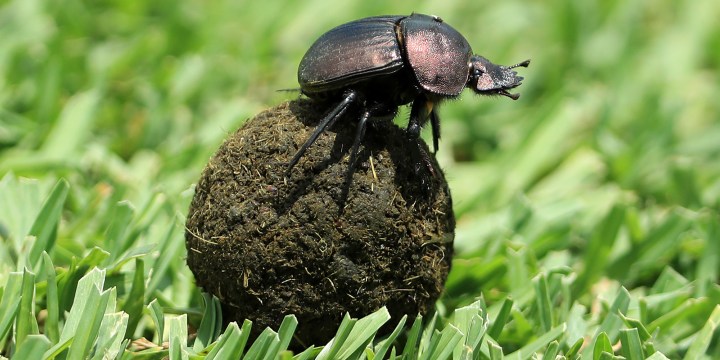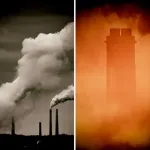OUR BURNING PLANET
Insect apocalypse: Dung beetles shrink or die at elevated CO2 levels, Wits scientists find

A Wits University laboratory experiment may have revealed a smoking gun that is triggering something that could have a catastrophic effect on humankind and the planet.
An unexpected discovery made in a laboratory at Wits University may have revealed a killer behind the “insect apocalypse” — the unexplained decline in the world’s insect populations.
An experiment has shown that elevated atmospheric CO2 levels cause dung beetles to either die or shrink in size and it is puzzling scientists.
The discovery started as a simple idea while the researchers happened to be observing an experiment where cacti were being grown under different atmospheric levels of CO2.
“We thought, why don’t we stick some dung beetles in there as well and see what happens. We had no expectation because for air-breathing organisms CO2 is literally trivial,” says Professor Marcus Byrne, an author on the paper that appeared in the journal Global Change Biology.
A small species of tunnelling dung beetle called Euoniticellus intermedius were placed into the convirons, a series of walk-in chambers that provide a controlled environment.
Dung beetles were used because they have become the lab rats of the insect world as they are easy to handle, are predictable in their behaviour and have been the subject of countless previous experiments.
The CO2 levels were manipulated to create four scenarios. The first mimicked conditions as they were believed to have been at pre-industrial revolution levels at around 1750.
The other sets of experiments had beetles exposed to CO2 at present-day levels, to predicted CO2 concentrations 30 years into the future and 50 years from now.
“We stretched into the past and reached into the future and Hey Presto! We got this effect and we were so shocked by it we repeated the whole experiment,” recalls Byrne.
The researchers then raised two generations of beetles under the various CO2 concentrations to make sure of their findings.
The results were the same.
Under heightened levels of atmospheric CO2, fewer beetles survived and those that did were smaller.
“When raised under CO2 levels predicted for the year 2070, a third fewer beetles emerged and were 14% smaller in size when compared to pre-industrial CO2 levels,” said Dr Claudia Tocco. She is a Wits University post-doctoral researcher who led the study.
It suggests that these beetles may have already become smaller in size over the past 272 years as industrialisation pushed up CO2 levels.
Now the researchers want to find out what is causing these high mortality rates and stunted growth.
Answering it might help in understanding and perhaps preventing the phenomenon that has become known as the insect apocalypse.
There is worrying evidence from around the world that insect populations are declining.
No one knows for sure what is causing it, but the list of suspects include habitat destruction, intensive agriculture, insecticides and urbanisation.
Byrne and his colleagues have a hunch that another suspect can be added to the list and it is far scarier than all the others. Its overreaching hand means that insects globally will be in danger.
Their suspicion is that higher CO2 levels are having an effect on microbes living in the soil.
These microbes somehow affect the dung beetle larva while it is feeding off its brood ball.
“We think that those micro-organisms could be contributing to its food. Or competing if the situation changes where the carbon dioxide goes up to such a level that they (the micro-organisms) lose interest in being part of that game, or a whole suite of different micro-organisms, transplants or displaces the normal ones,” explains Byrne. “The short answer is we don’t know.”
CO2 levels are rising uniformly across the globe, and if it is affecting microbes in the soil, any insect that spends its life or part of its life in the soil will be in danger.
“Dung beetles, like many insects, spend a large portion of their lives in the soil — as larvae, pupae and as adults,” says Dr Blair Cowie, another member of Byrne’s research group.
Next will be more experiments.
“We are going to pick apart the microbe suspicion,” says Byrne, “where we are going to literally dissect the whole system into its component parts and examine each one separately.”
They also want to experiment on other ball-rolling dung beetle species to see if rising CO2 levels affect their behaviour.
Hopefully, says Byrne, it might just reveal a smoking gun that is triggering something that in the future could have a catastrophic effect on humankind and the planet.
“We need to seriously support the movement away from fossil fuels and invest in renewable energy — or else we stand to lose the vital ecosystem services that insects provide us free of charge,” he says. DM/OBP



















 Become an Insider
Become an Insider
🙁